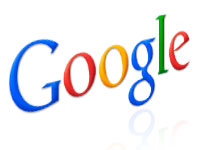
Google has come up with a way to reduce the number of accidental clicks that occur when “fat fingers” meet the small screen.
These unintentional clicks are the bane of mobile advertising, causing advertisers, publishers and consumers grief.
Confirm Your Intent
Google’s new confirmed click feature kicks in when a user touches certain zones on an ad, usually the border between content and a banner. Instead of automatically sending the user to the advertiser’s website or landing page, the system delivers a message asking, basically, ‘Do you really want to go there?’
“Many of us have at some point clicked on an ad by accident, which ultimately is a bad experience for the user, the publisher and the advertiser who pays for a click that may not be valuable,” said Allen Huang, product manager of mobile display ads at Google, in a blog post.
The confirmed click feature — the result of studying ad behavior and conducting tests with consumers — has been introduced into all in-app image ad banners on smartphones.
“Our team first introduced confirmed clicks on mobile earlier this year, when we integrated AdMob into AdWords,” Jonathan Alferness, director of product management for mobile ads at Google, told the E-Commerce Times. “We started with text and app promotion ad formats, and saw some really encouraging results.”
Those early results provide additional insights that helped Google’s mobile advertising team refine the feature to work for advertisers, publishers and consumers alike.
“We learned a ton from that initial launch, but we also knew that image ads present unique challenges, and we needed to develop the right treatment for them,” Alferness said.
The Fat Finger Click
Google isn’t saying mobile users have fat fingers — and Google isn’t the only one that faces this problem. With small touchscreens, track pads and other navigation tools on a small screen, ads sometimes get clicked unintentionally.
“It’s sort of analogous to the early days of online marketing years ago, where there was a lot of discussion of click fraud,” said Greg Sterling, the founding principal of Sterling Market Intelligence. “That was pretty widespread discussion for many years — but that’s not the case in mobile advertising.”
Two strategies to address the issue are to require a confirmation, or to change the model so that it’s based on a more tangible action, such as cost per action, Sterling said.
Some industry players think the confirmed click will detract from conversions, though most of those players work with cost-per-action ad units, such as click-to-call or cost-per-download ads.
For display and text advertisements, the confirmed click may serve to reassure advertisers, and also help consumers stay with their content when they don’t mean to click on an ad.
“This is a confidence booster as much as it is to weed out clicks,” said Sterling.
Evolving the Mobile Ecosystem
Google’s efforts are a step in the evolution of mobile advertising.
“There are going to be multiple kinds of advertising just as there are online,” said Sterling.
Search remains “the biggest chunk of mobile advertising in the U.S. right now,” he noted. “It’s the tried and true model, but also because Google has a lot of reach. Google is pushing this model as a default.”
Emphasis on search doesn’t mean Google is putting all of its eggs in one basket, though. The company continues to develop its ad display units and other forms of advertising.
“This is the right thing to do for the ecosystem at large in the long run,” said Google’s Alferness. “We need to do right by advertisers, publishers and users. Of course, it’s still early days for mobile advertising, and this is just the latest in our ongoing efforts to make mobile ads as useful and effective as possible.”
Advertising on the Small Screen
As mobile continues to evolve, it shapes new forms of advertising.
“It’s hard right now to predict exactly what’s going to work,” said Sterling. “Most advertisers and agencies are like deer in the headlights. They don’t know how to advertise across channels, and consumer behavior is changing.”
Mobile may forge the way for new advertising formats, such as building closer relationships between brands and consumers, and fostering loyalty relationships.
“It’s not going to be a straight interpretation from online to the small screen,” said Sterling.












































Social Media
See all Social Media